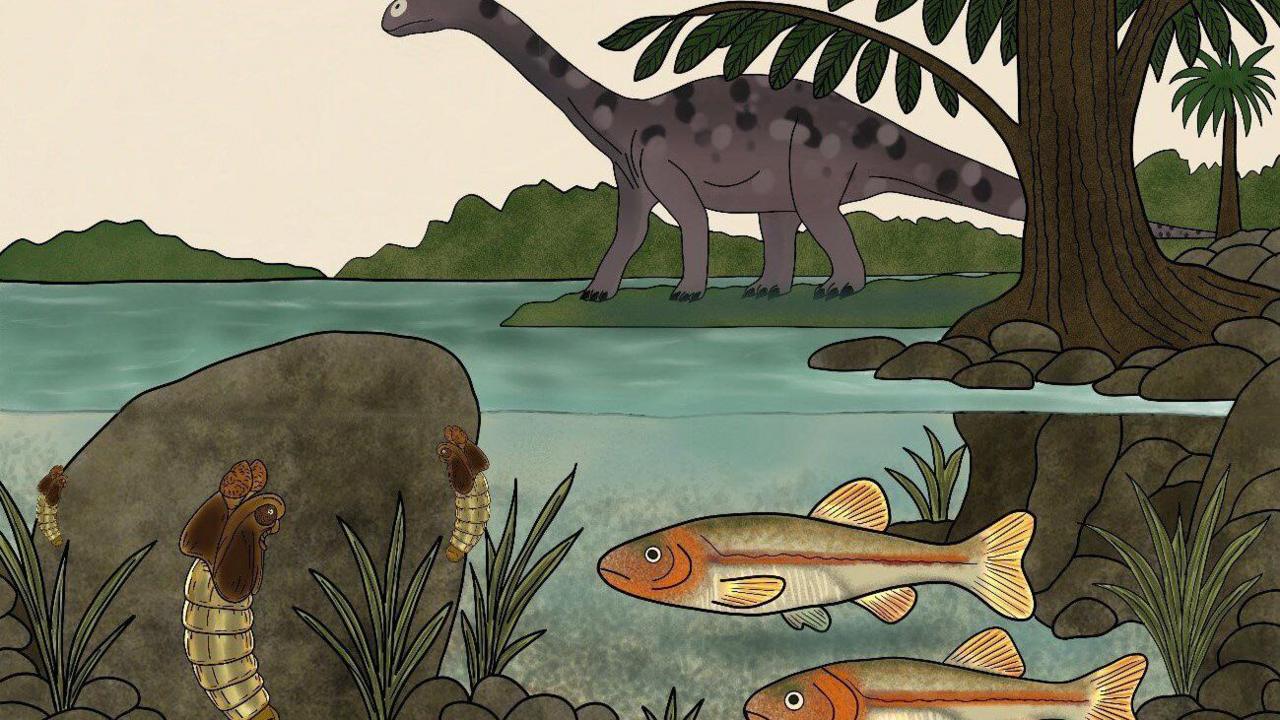Fly fossil found in Australia reveals clues to Earth's past

An artist impression of the flies clinging to the rock in a river bed
- Published
An international team of scientists has made an exciting discovery in Australia - a fossilised insect that lived around 151 million years ago.
The fly fossil, from the Jurassic period when dinosaurs roamed the Earth, was uncovered at the Talbragar Fish Beds in New South Wales.
It belongs to a family of small flies known as Chironomidae, or non-biting midges like the ones we see today.
The discovery is special because the fly has a capability that, until now scientists believed was only seen in sea creatures.
- Published10 August 2020
- Published10 October 2024
Why is the fossilised fly so special?
Scientists have discovered that the Jurassic fly has a terminal disc.
This may have helped the insect stick to rocks.
Until now, scientists believed that only marine - or saltwater - creatures had this ability.
These insects lived in or near freshwater like lakes and ponds.
The newly discovered species has been named Telmatomyia talbragarica, which means "fly from the still waters", because it probably lived in a calm, freshwater lake.
What else makes the fly fossil discovery special?
The study from the Doñana Biological Station (EBD-CSIC) in Spain, where scientists study nature and wildlife is also helping scientists rethink where these tiny flies first came from.
Some evidence had suggested they originally appeared in the Northern Hemisphere - areas of the world above Earth's equator.
But, Viktor Baranov, a researcher at the Doñana Biological Station and first author of the study says this find suggests they may actually have come from the Southern Hemisphere, in a supercontinent called Gondwana.
Millions of years ago, the supercontinent called Gondwana was a massive area of land that included what is now Australia, South America and Africa.
"This fossil, which is the oldest registered find in the Southern Hemisphere, indicates that this group of freshwater animals might have originated on the southern supercontinent of Gondwana."
What's the difference between all the dinosaur periods?
"There is a strong bias towards finding and studying fossils in the Northern Hemisphere. Because of this we end up making incorrect assumptions about where groups originated," explains Matthew McCurry, palaeontologist from the Australian Museum and The University of New South Wales.
Compared to places like North America or China, there are fewer fossil records from Australia. But it's not because Australia didn't have ancient creatures or dinosaurs - they were definitely there, scientists say - it's because fossil hunting there is harder.
Large parts of ancient Australia weren't always great for fossil preservation - for example, they may have been dry, rocky, or eroded instead of being swampy or wet.
And very remote outback regions can be difficult to access for digging.
However, fossil sites in Australia, such as Winton in Queensland and Lightning Ridge in New South Wales, are revealing exciting discoveries - like giant sauropods (long-necked dinosaurs), and even dinosaur footprints.
